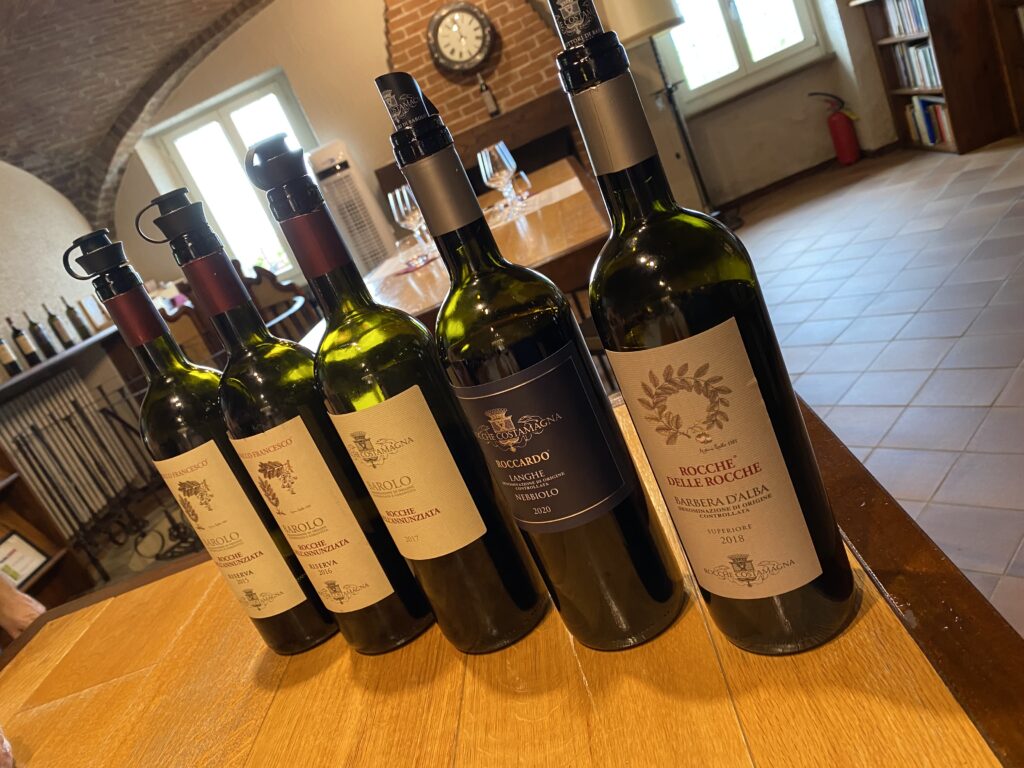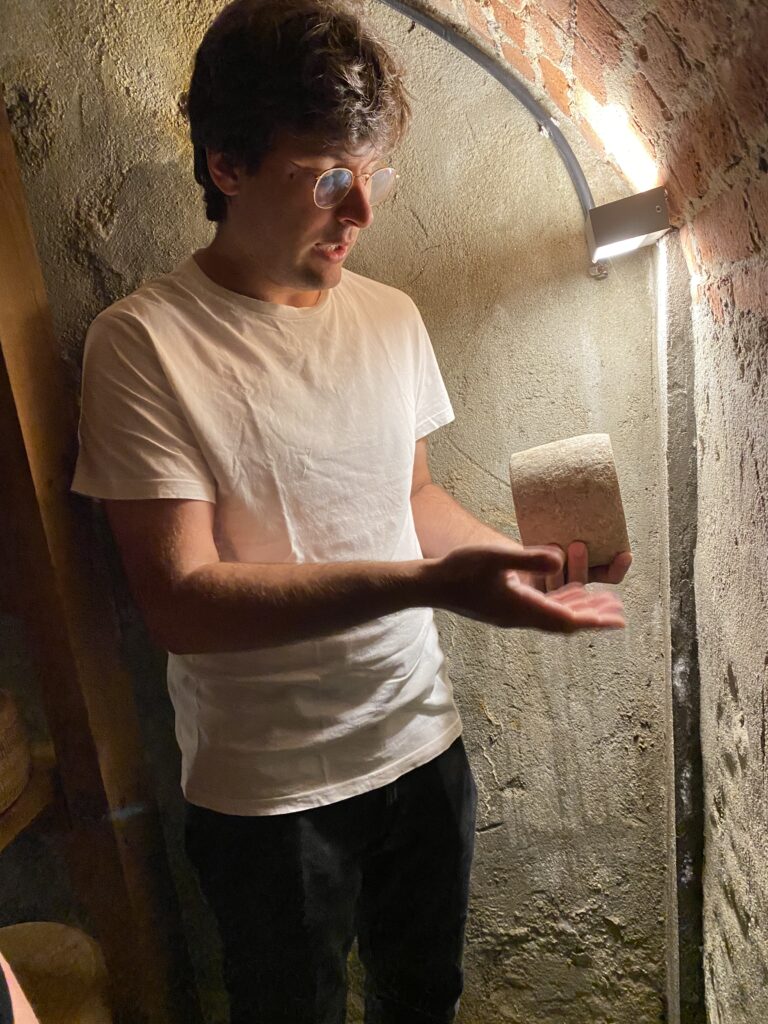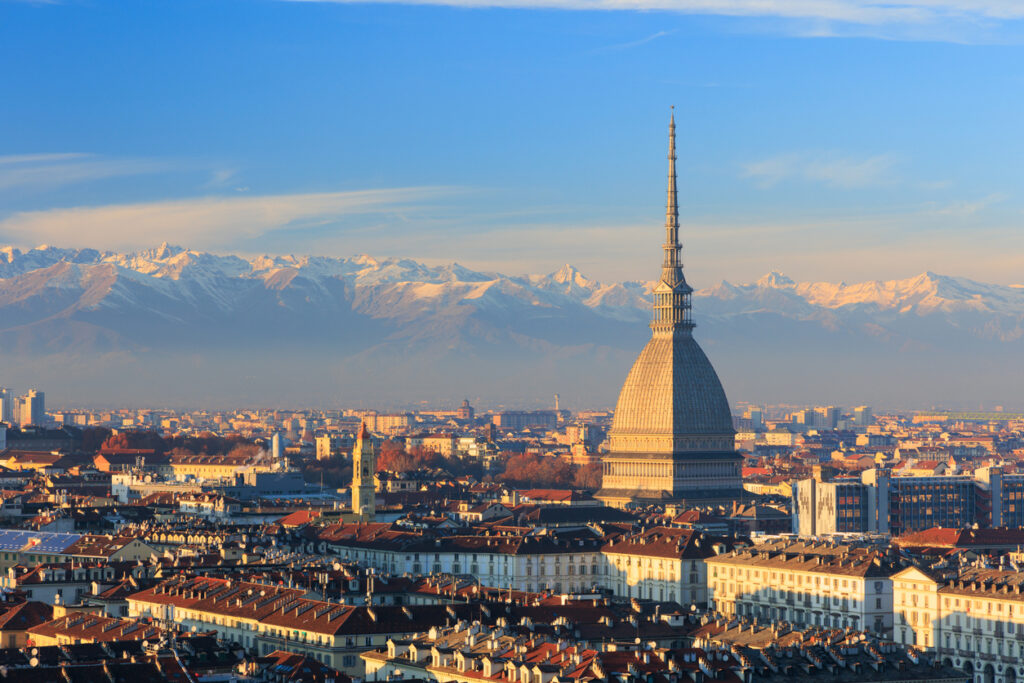4 Extraordinary Days in Piedmont, Italy

The Italian region of Piedmont is in the far northwestern part of the country, at the foot of the Alps, bordering France and Switzerland. Renowned for its high-quality wine and cuisine, its mountain lakes, and its elegant capital, Turin, Piedmont is easily worthy of a week or more. But 4 days will give you a nice taste.
For this short trip, having a base in Turin works well. For a longer trip, we would suggest spending a few days based in Alba or Asti, in addition to time in Turin.
The best location to stay for tourism in Turin is near the main train station, Porta Nuova, in the heart of the city. There are many hotels in the area, and you will be able to walk to most of the main attractions in the city, and easily catch a train to other locations in Piedmont and beyond.
These days are in no particular order and can be easily changed around based on weather and specific site openings.
** Please note that this page contains affiliate links, meaning we may earn a very small commission if you book through them (at no extra cost to you).
Table of Contents
Day 1 – Explore Turin
Despite being a city rich in history, culture, architecture, and natural beauty, Turin is not a touristy city. Unlike Rome, Florence, and Venice, Turin has yet to attract large numbers of non-European vacationers, and it remains delightfully authentic and uncrowded.
Start your first morning (well, every morning) in Piedmont with some of the best coffee you’ve ever tasted. Don’t worry about searching for it; Turin has one of the highest cafès per capita on the cafè-centric continent. Lavazza coffee originated here in 1895, revolutionizing the coffee world by creating blends. Before that, the taste of coffee was wildly unpredictable and, sometimes, undrinkable. Lavazza remains one of the world’s highest-ranking coffee producers.
A cup of coffee and a delectable Italian pastry makes for a wonderful way to start the day.
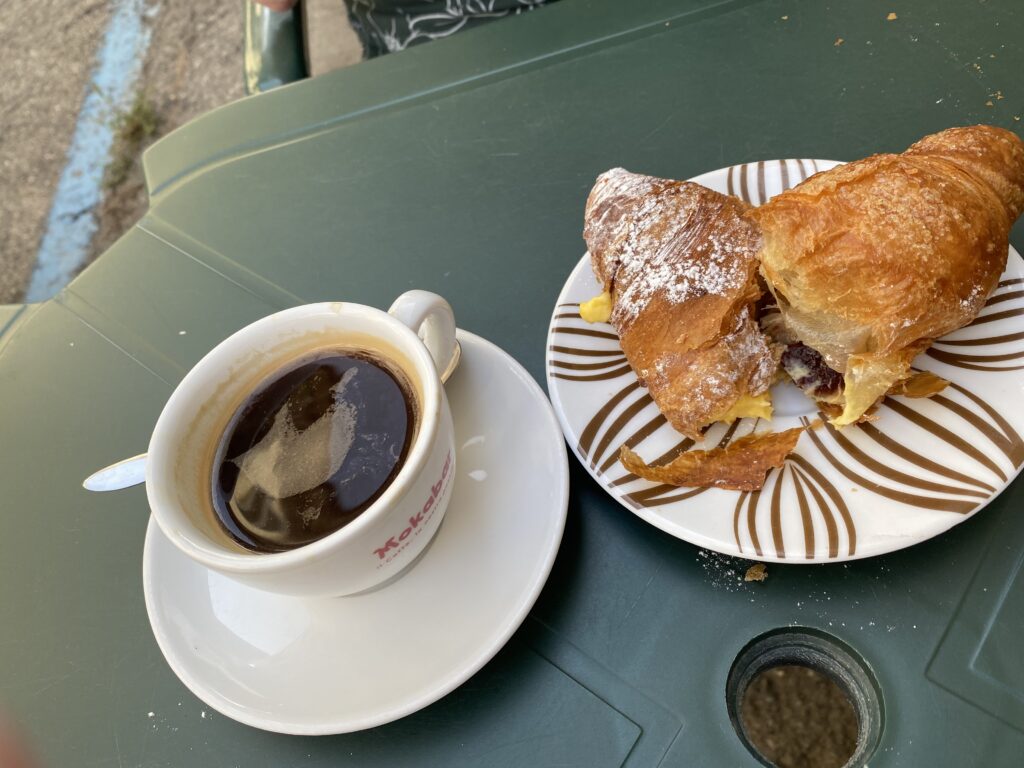
After breakfast, it’s time to explore the beautiful city!
From the train station, saunter to the north, through the elegant, high-end shopping street Via Roma. It is lined with beautiful porticos to protect you from the elements. The street runs through Turin’s historic center.
You’ll first encounter Piazza San Carlo, (also known as Piazza Napoléon), with the Bronze Horse monument in the center. It commemorates the military achievements of Emmanuel Philibert, the Duke of Savoy and a general in the Spanish Army in the mid 1500s. Philibert made significant contributions to the city of Turin.
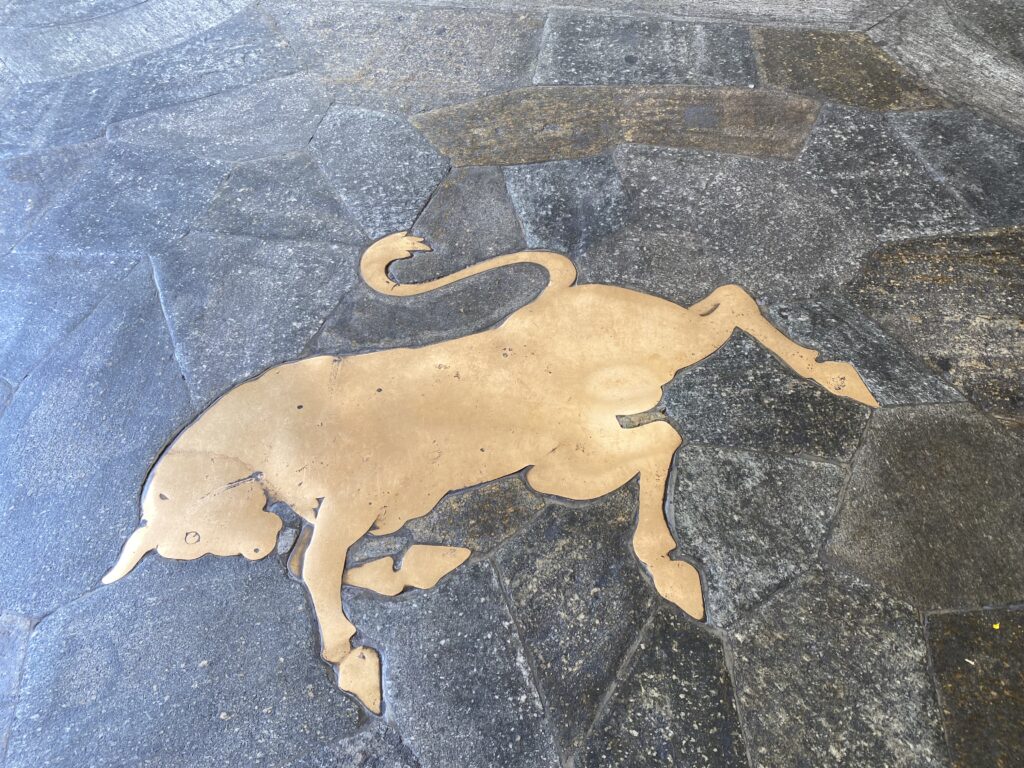
The piazza is surrounded by historic shops (including the famed chocolate shop Stratta), “twin” Baroque churches, San Carlo and Santa Cristina, and cafès, including Caffè Torino, which has hosted kings, artists, and Hollywood royalty. Just outside its door is the bronze Rampant Bull, a symbol of Turin. Curiously, it is supposed to bring luck to those who step on the bull’s “assets”. As such, it’s commonplace to see people lining up to step on the poor bull’s private parts.
Just beside the piazza is the arcaded Galleria San Federico, a century-old indoor shopping center. In addition to shops and restaurants, It houses the magnificent Art Deco Lux Theater.

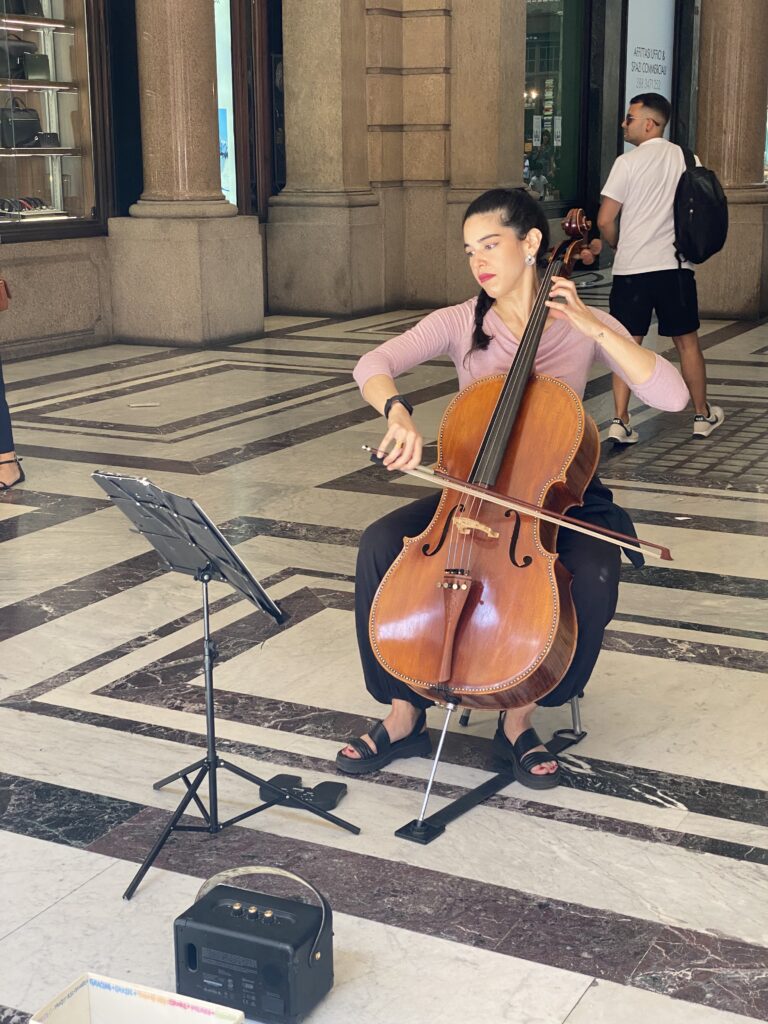
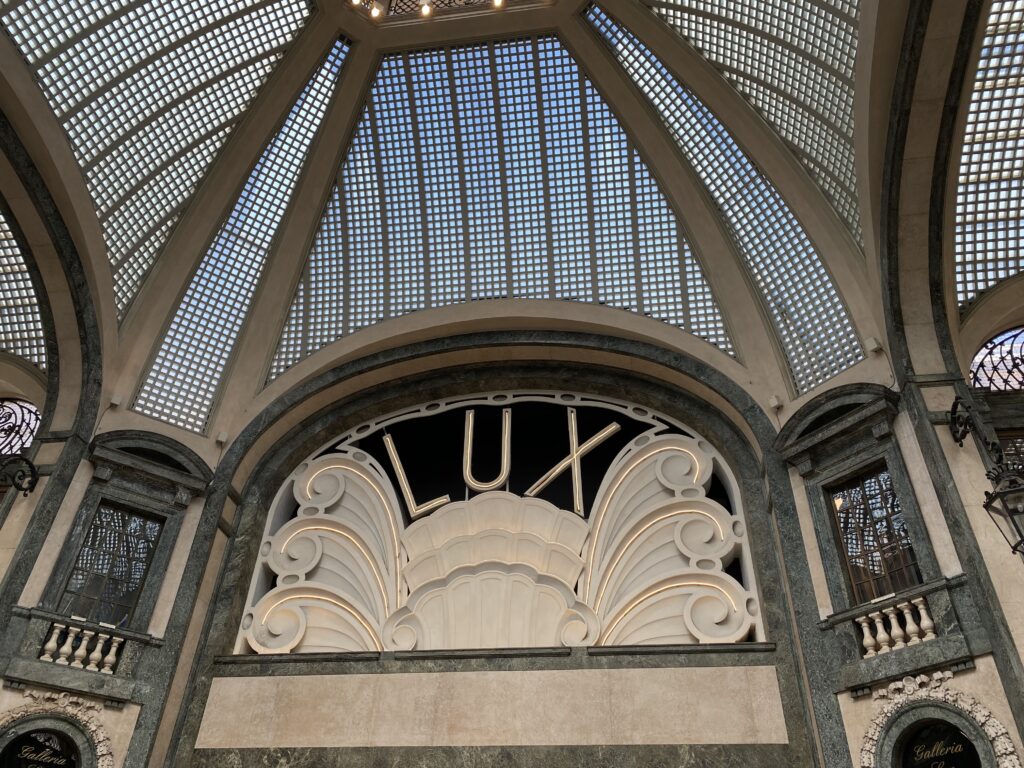
Continuing north on Via Roma for another 10 minutes or so, you’ll find Piazza Castello, featuring the Palazzo Madama. Believed to have been built in the 1200s as a defensive fort, it was later transformed into a castle and occupied by various members of the House of Savoy. In the 16th & 17th centuries, continued renovations turned it into an extravagant palace. Today it houses an art museum focused on Turin, with pieces from the medieval, Renaissance, and Baroque periods, as well as expansive gardens.
The opulent Royal Palace, built in the 16th century, overlooks the Piazza Castello. The Palace houses the Chapel of the Holy Shroud, which was built to house the Shroud of Turin, a linen cloth believed by many to wrap Jesus’ body after his crucifixion. It is said to, miraculously, have a faint imprint of his human image.
After lunch in one of the plentiful restaurants or cafès you passed, it is just a quick walk to one of Turin’s most unexpected and interesting attractions: The Egyptian Museum.
Believe it or not, it is the second-largest location of Egyptian artifacts in the world. Second to, of course, Cairo. Why is the second-largest Egyptian collection in Italy? In the 1800s, King Carlo Felice of Savoy bought a collection of Egyptian antiquities to give to the Piedmont capital an archaeological museum that could compete with all the other museums around Europe. So basically it was created for bragging rights! Torino archeologists have continued to collect artifacts up to the present day. It is a large and well-done museum.
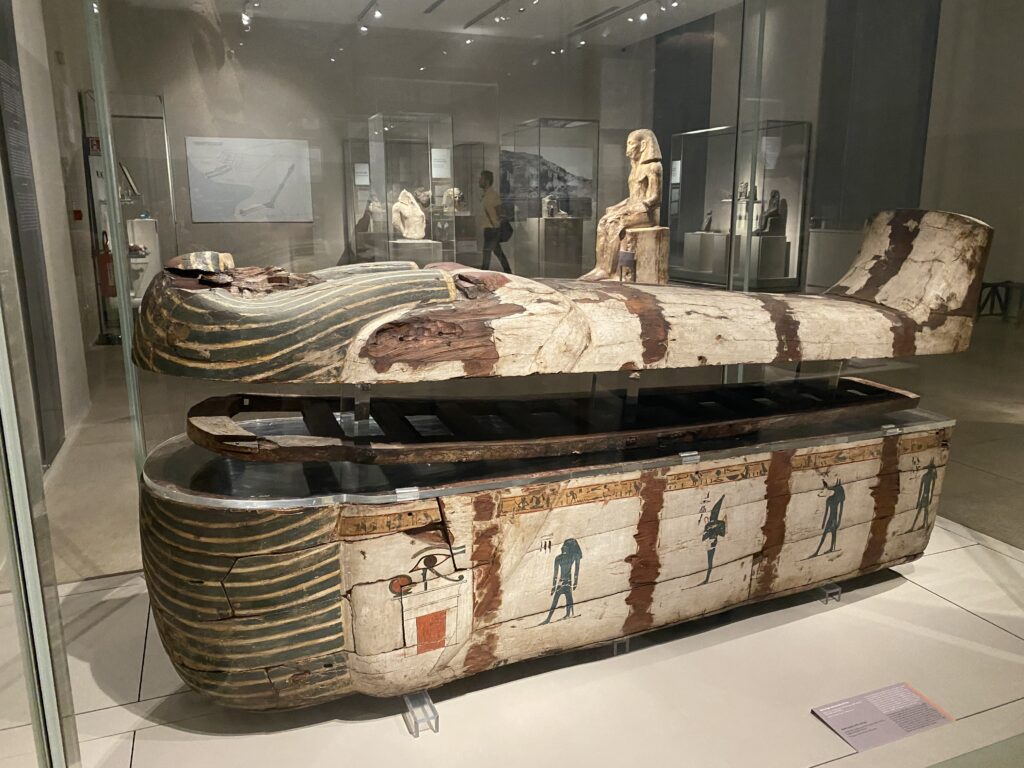
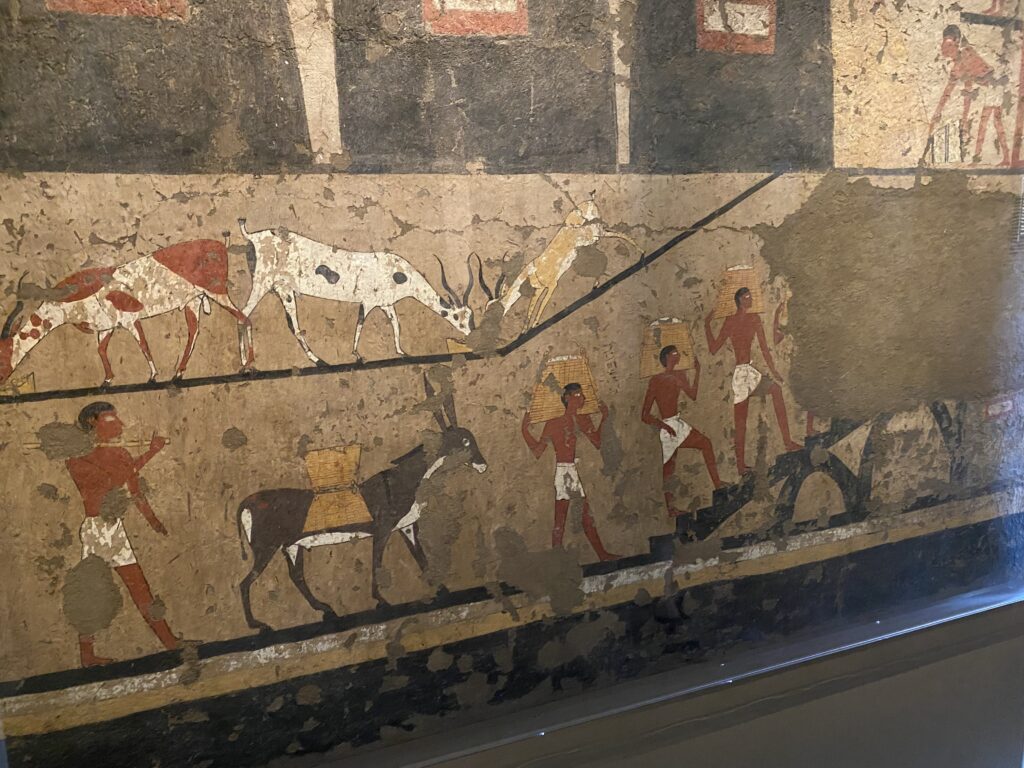
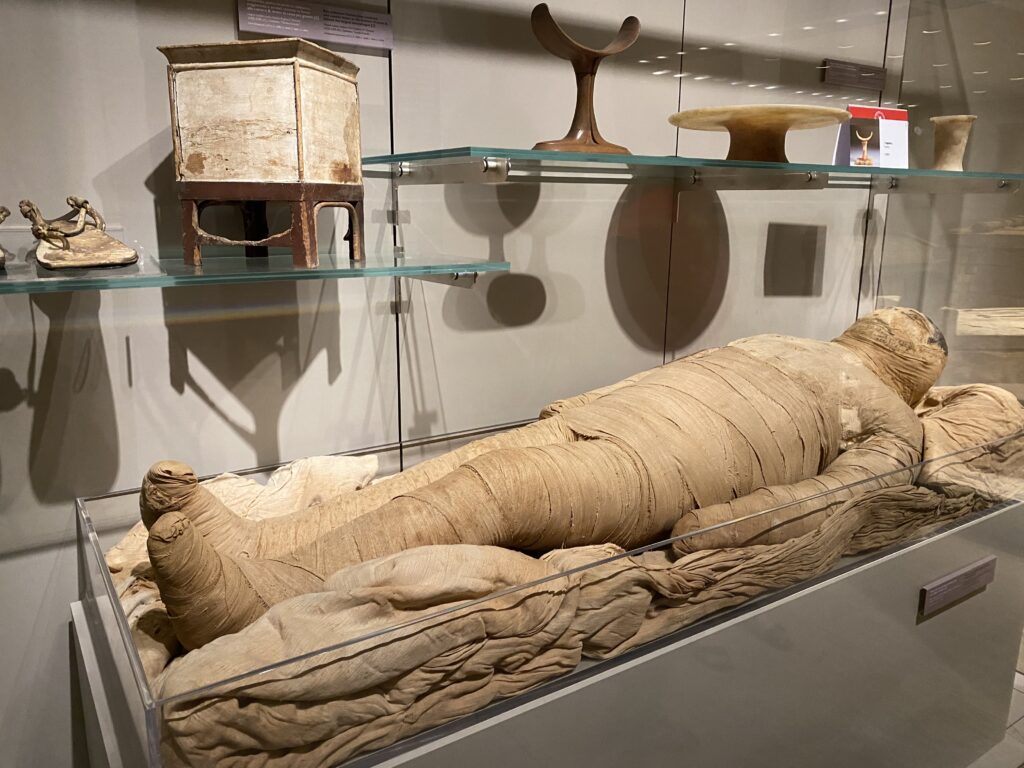
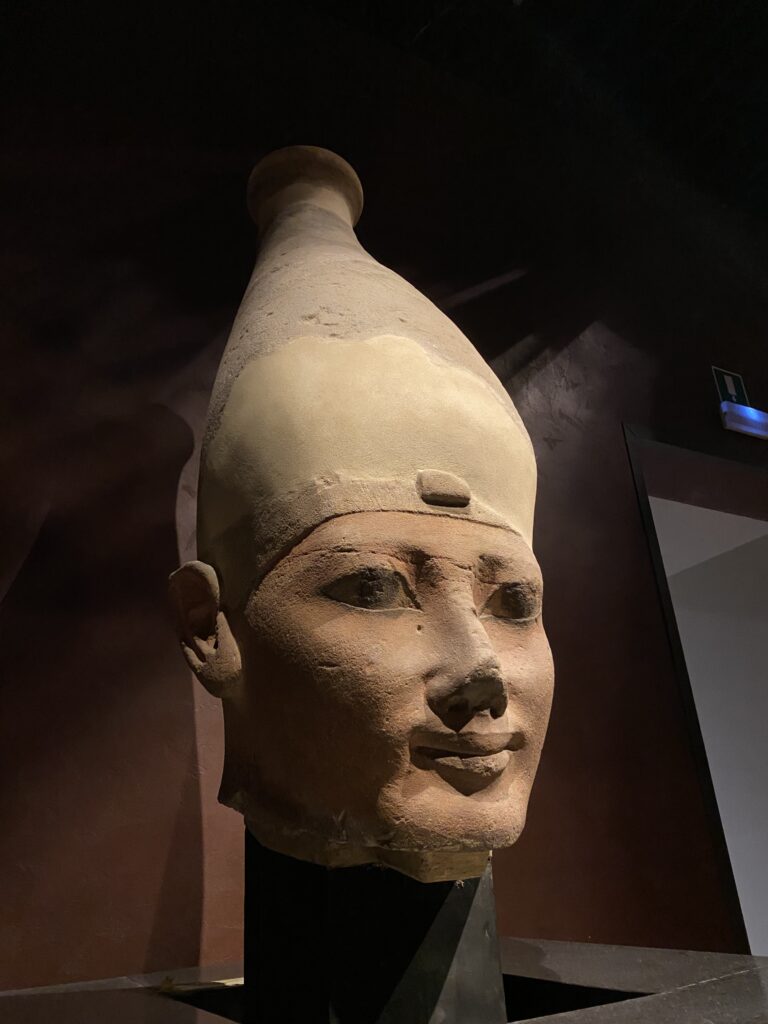


After a long day of exploring, it is time for dinner. Turin is the home of the slow food movement, focusing on local, sustainable, non-processed foods. It emphasizes quality and enjoyment over quantity and speed. Suffice it to say, the cuisine in Turin is top-notch.
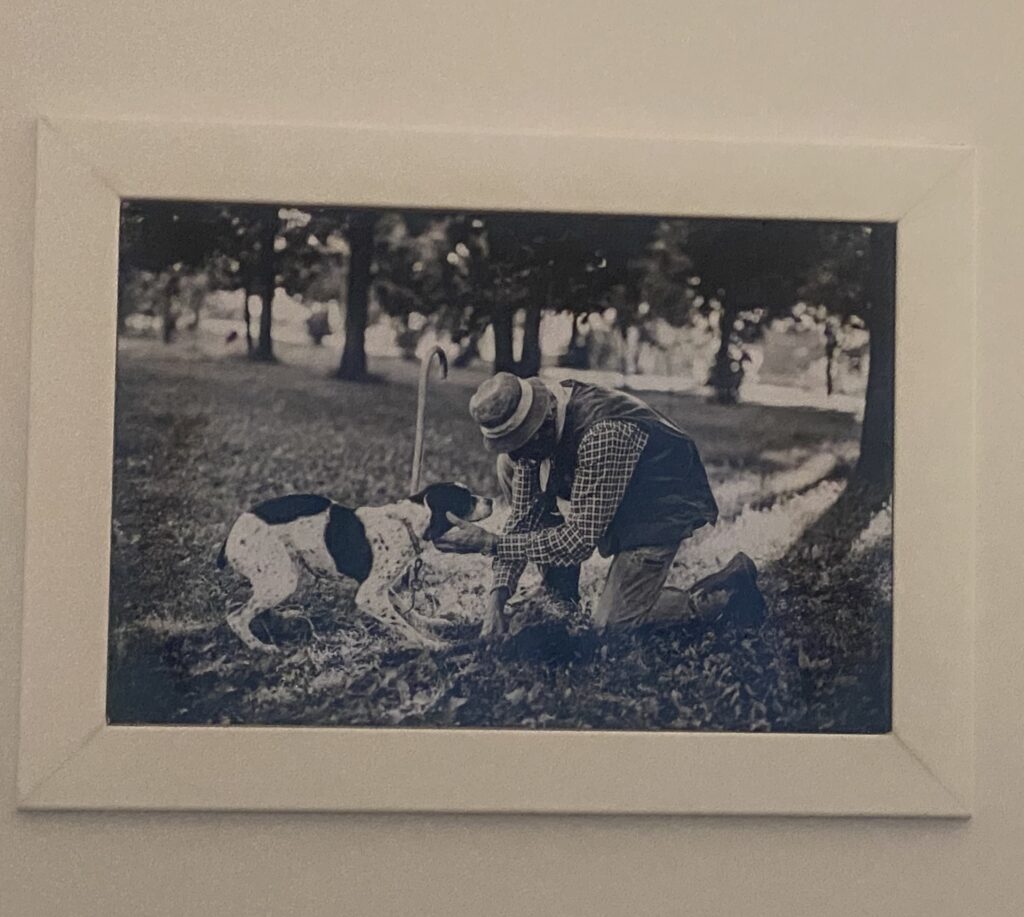
One unique suggestion is Tabui, a restaurant specializing in truffles, something for which this region is known. During the correct season, there are abundant tours offering truffle hunting for both black truffles and the elusive white truffles.
Almost every dish on Tabui’s menu has truffles.
The restaurant is decorated with photos of the owner and his truffle hunting dog. Even the water bottles featured the pup!
They feature a rotating menu but some examples include such things as mushroom flan with Raschera Cheese, tagliatelle with guinea fowl ragù and black truffle, and Rossini fillet with foie gras, black truffle, and spinach. Every bite we tasted was amazing.

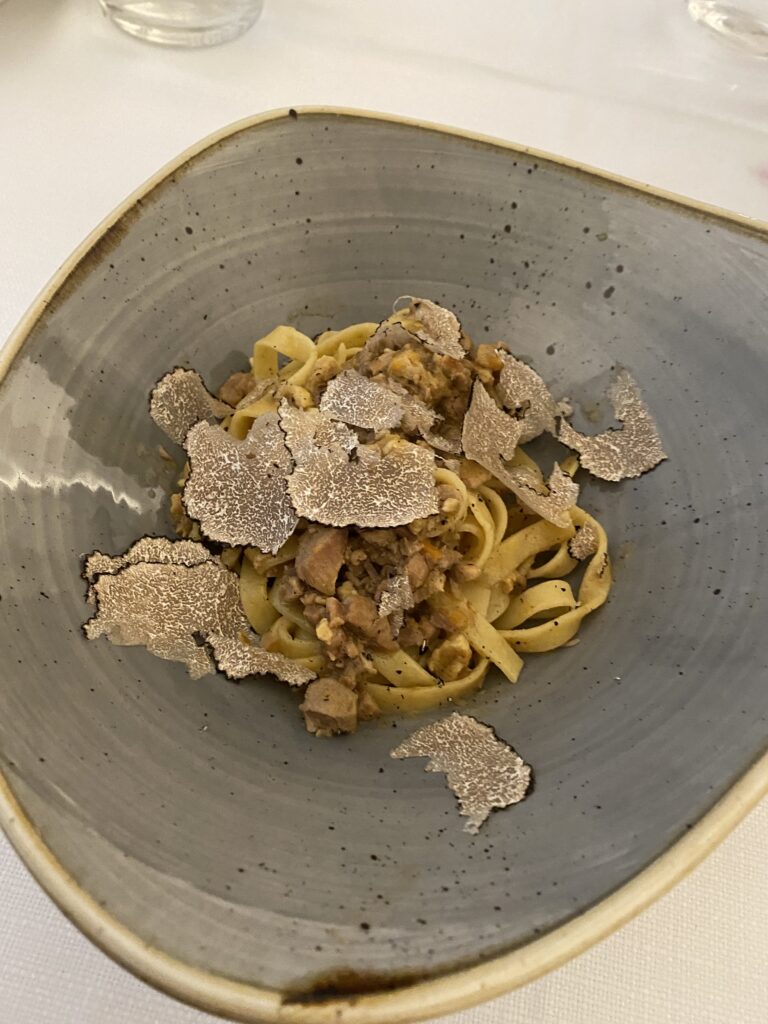
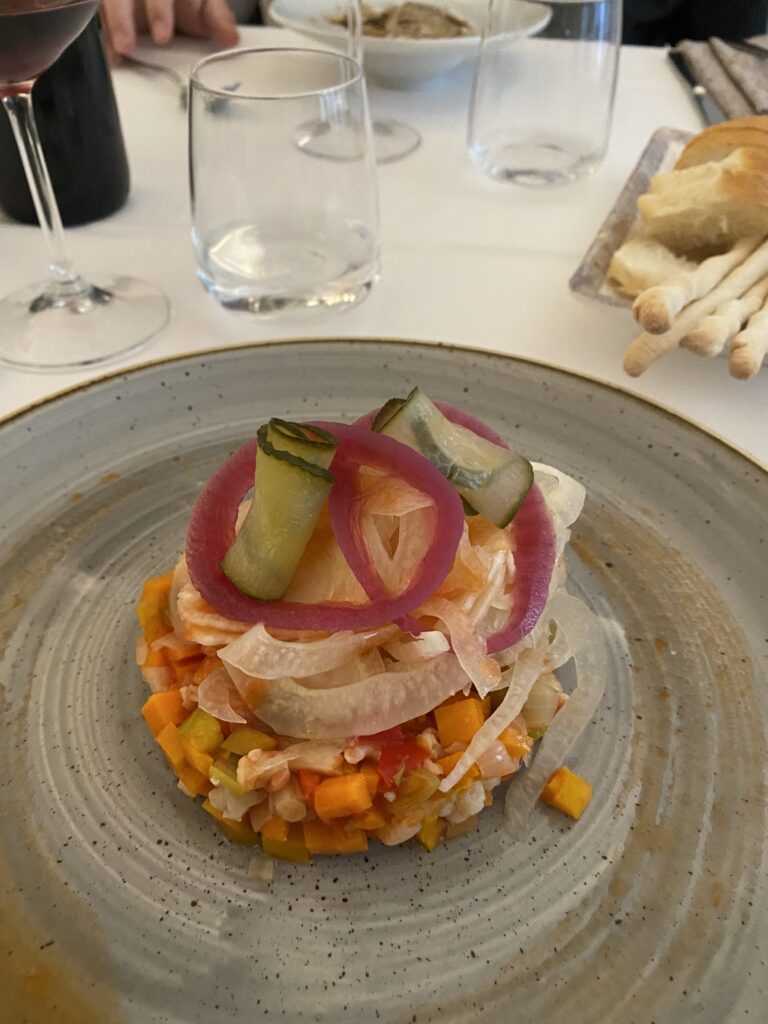
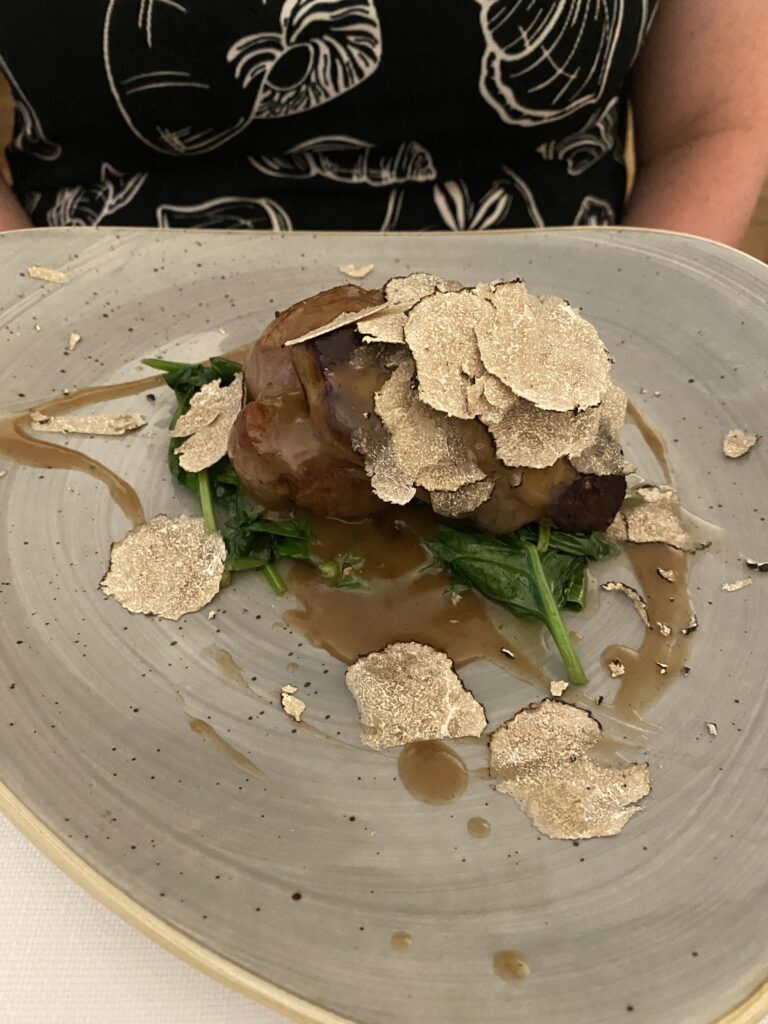
Day 2 – Wine County
Piedmont is perhaps most famous for its red wine, the finest of which are Barolo and Barbaresco, made from the finicky Nebbiolo grape. Piedmont also produces the “workhorse” Barbera, its most widely planted grape, which in our opinion makes mighty fine wine as well.
The region is also known for Moscato d’Asti, a sweet white wine.
The Langhe/Montferrato wine regions of Piedmont are not far from Turin. The charming, medieval town of Asti is an easy 30-minute train ride and is a great place to start a tour of the area. Several qualified, passionate guides offer small group tours, and provide a delightful day exploring the region.
If you opt for a private tour, it would be hard to beat an experience with Amanda, owner of Amanda’s Wine Adventures. Though born and raised in New Hampshire, she is living the dream in Langhe now, after falling in love with an Italian man (now her husband) while studying wine production there.
Amanda’s tours are tailored to each customer, and she builds a day based on their interests and priorities. Suffice it to say, many interests focus on red and/or wine, small producers, beautiful landscapes, and local cheeses.
Our tour was relatively typical for a first-time visitor to the area. It included in-depth visits to two wineries, a special lunch, and gorgeous, informative drives through the countryside.
The first winery was just outside of Asti at the Marchesi Incisa della Rocchetta Winery. As a small winery, guests are often hosted by one of the owners. In this case, an owner and the winery cat. They have just ten employees. After a tour of the wine production area, tastings included Barbera d’Asti and a fancy Barolo, in addition to an unexpectedly light and refreshing Moscato. This is one of the reasons we love tours with individuals or small companies: the guides have established long-term relationships with the people in the wineries, and visitors get intimate, one-on-one experiences with the winemakers. It makes the tour all the more extraordinary.
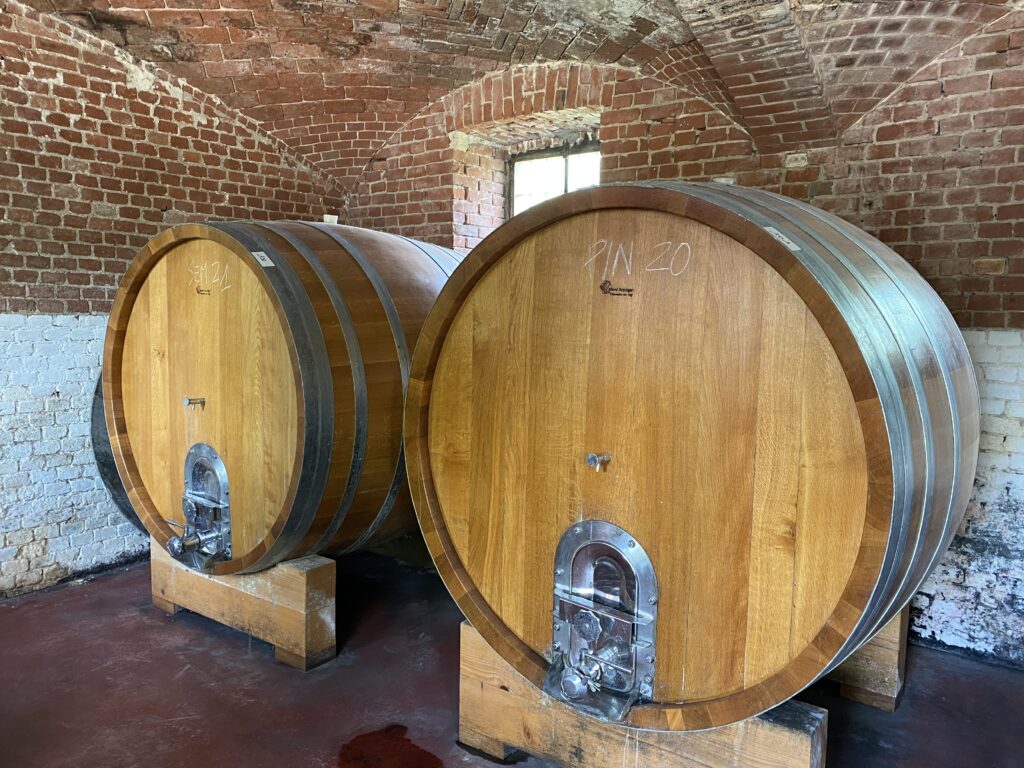
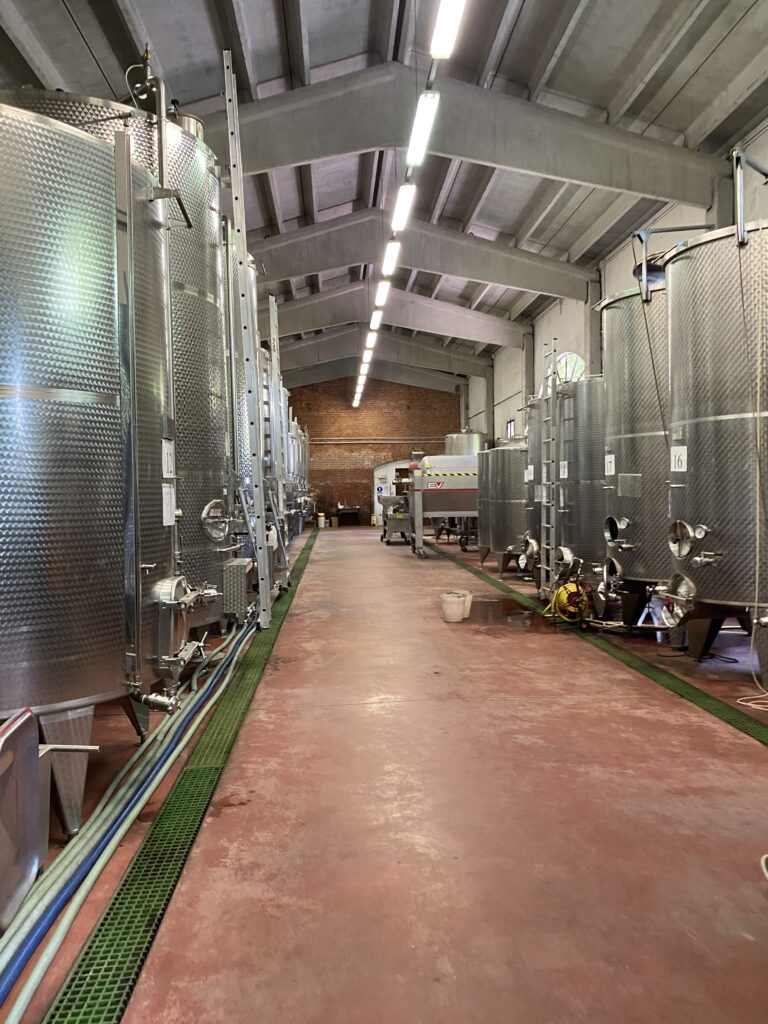
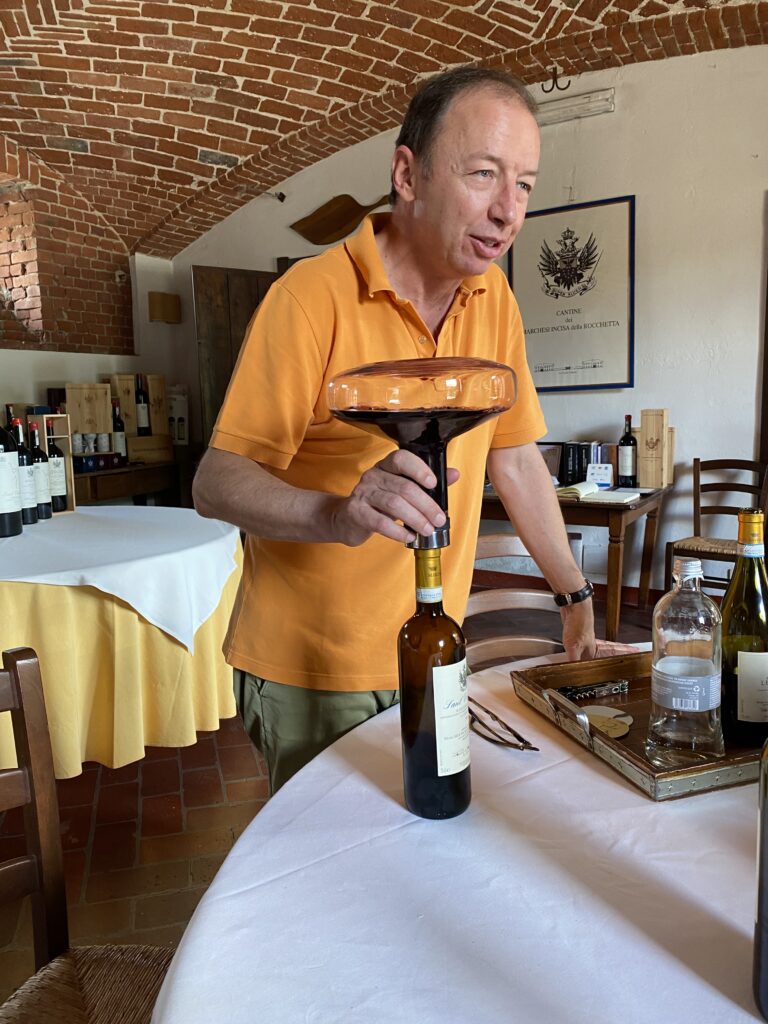
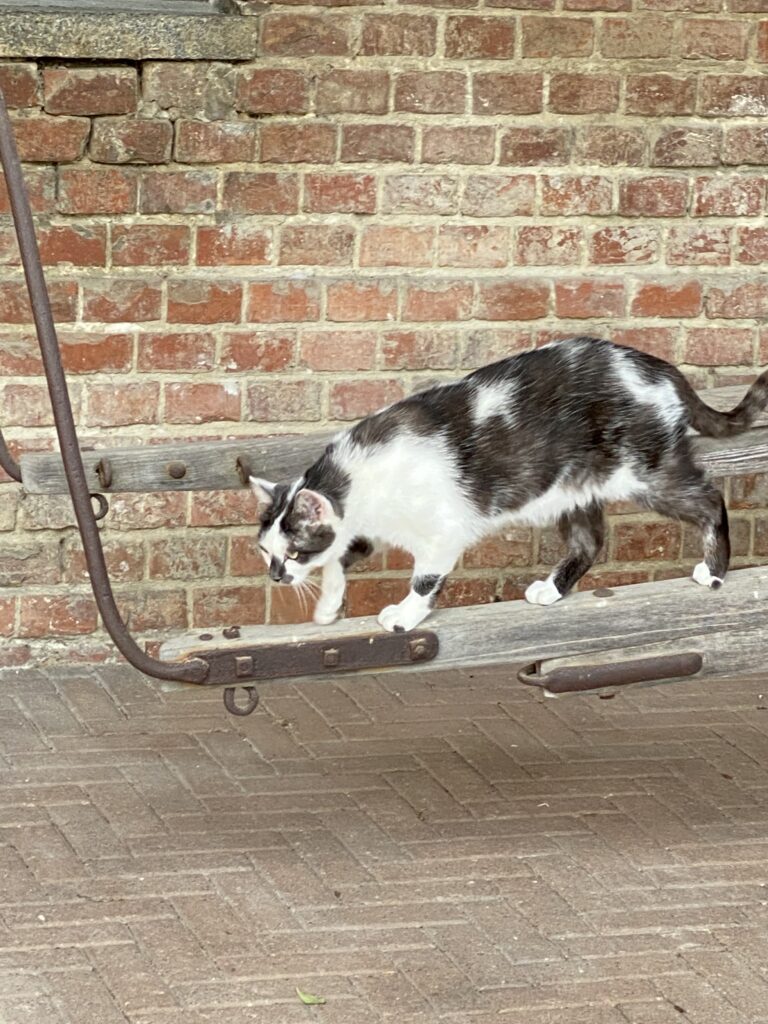
Most wine tours offer some type of uncommon lunch, either at a winery or in a unique restaurant. Amanda offered those choices along with a third – lunch on the farm of a cheesemonger, with a tour of his cheese caves.
Any of the three choices would have been wonderful, but we did not pass up the chance to spend time with the cheesemonger, Lorenzo, at his farm. Lorenzo’s passion burst to the surface as he provided a private tour of his impressive cheese cave.
Then he and his wife Barbara brought out platters of greens, pickled vegetables, freshly picked apricots, and, of course, cheese, and set them on a beautiful table overlooking the countryside. Along with Lorenzo, Barbara, and Amanda, we feasted. There were twelve kinds of cheese!
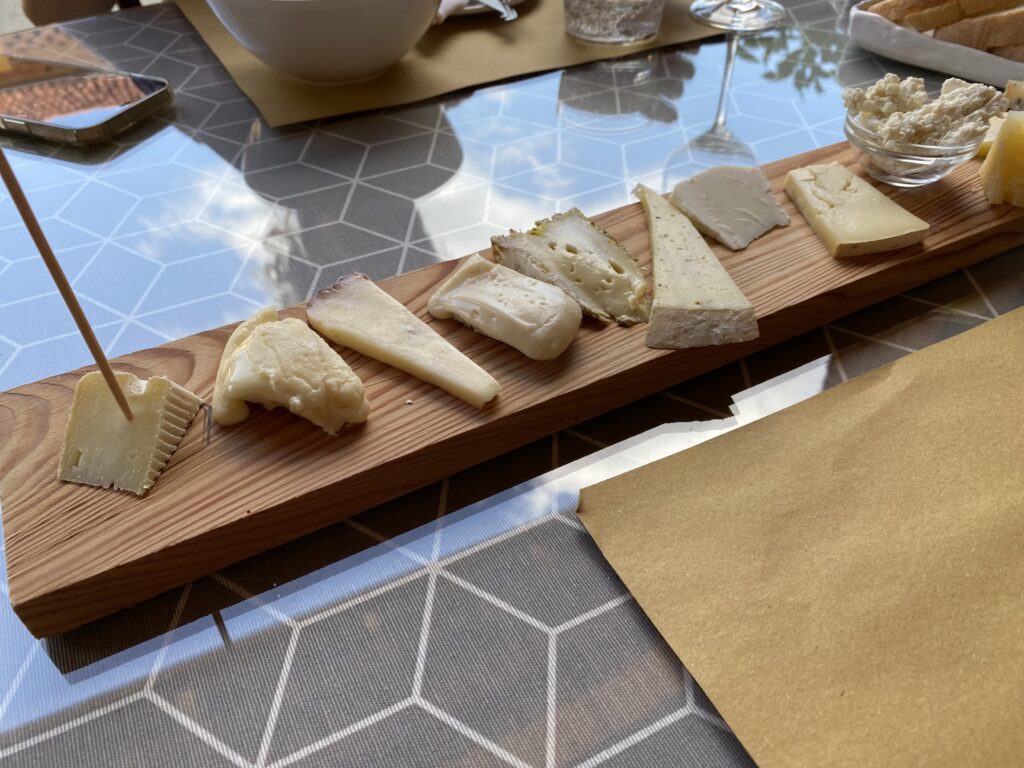
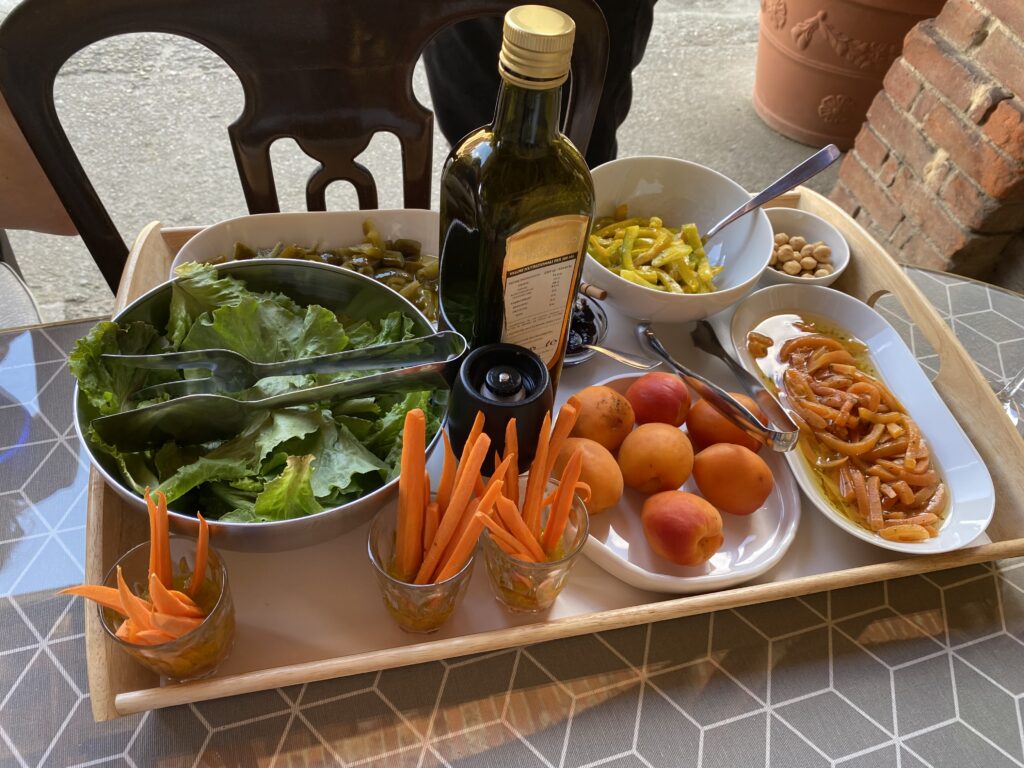

The weather was perfect, the company was delightful, and the food was amazing. Such an experience.
The second winery on this tour was a bit more fancy! We traveled into the tiny but stunning village of La Morra, up a winding road to the very top of a steep hill, to our second winery, Rocche Costimangna. These historic Barolo vineyards are now run by the grandson of the founder. They were the first winery to put their Barolo wine in bottles with corks and preserve the quality (as opposed to just filling up any old jug). They’ve won all kinds of awards over the last 180-ish years.
Their classy tasting room has ancient undisturbed wine bottles on display, caked in nearly two centuries of dust. It also has stunning views. We were thrilled to get to taste a lovely Barbera D’Asti, and four Barolos, in ascending order of awesomeness. What a fabulous afternoon.
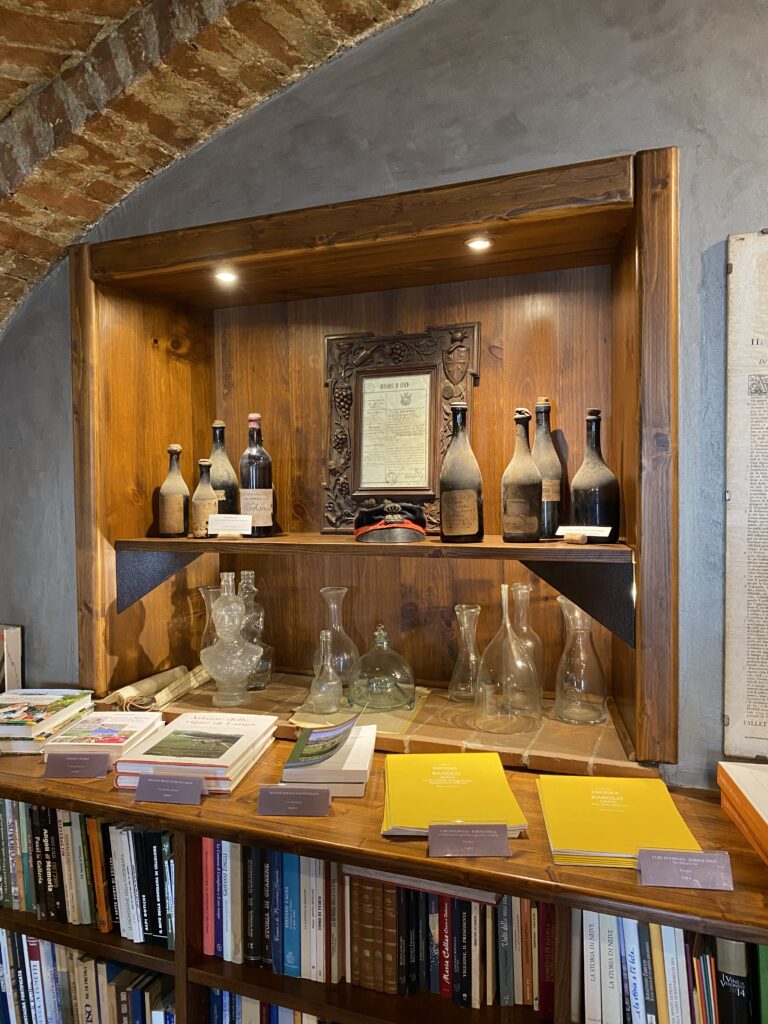
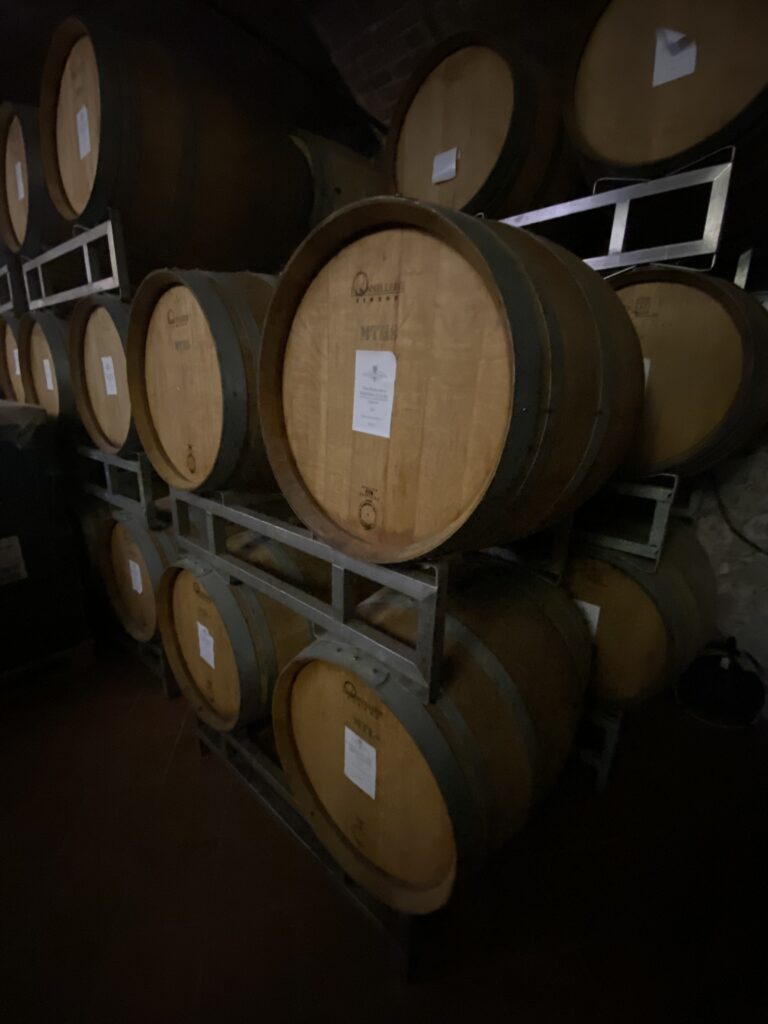
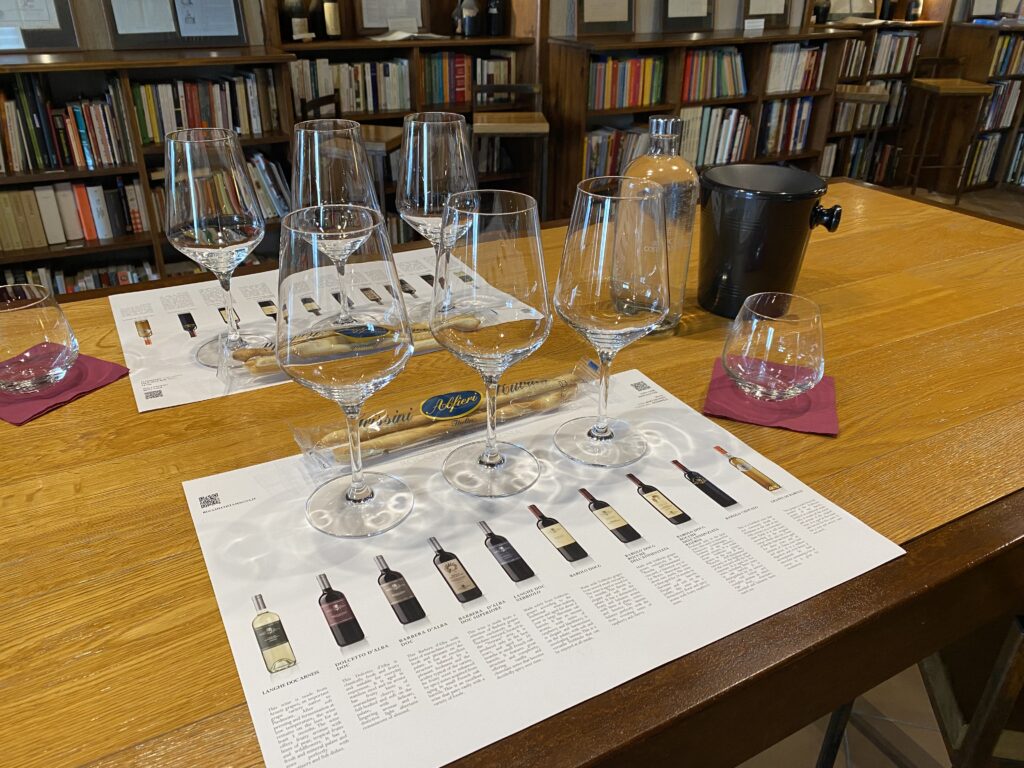
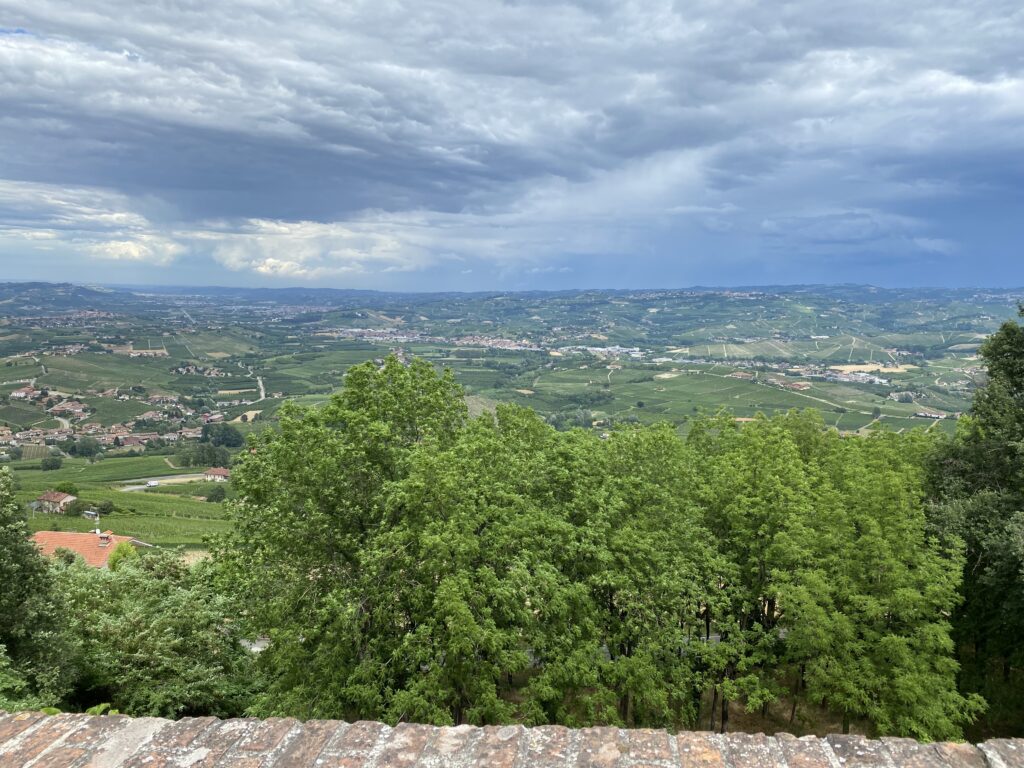
We bought a pretty good amount of wine throughout the day. We took two bottles with us for the rest of our time in Italy, and Amanda kindly packed the rest of it up and shipped it home for us. It arrived a week or so after we did. In the European Union, if you have the wine shipped back to the US, you don’t have to pay the substantial VAT taxes. That savings paid for the shipping, and then some.
Amanda and other guides offer multi-day tours in this region, which would provide a more relaxed pace, and allow some time to enjoy a few of the lovely towns.
After a long day, tonight would be a great night to pop into a grocery store and pick up some charcuterie to eat at your accommodation, and enjoy along with one of the bottles of wine you purchased today!
Day 3 – Sacra di San Michele
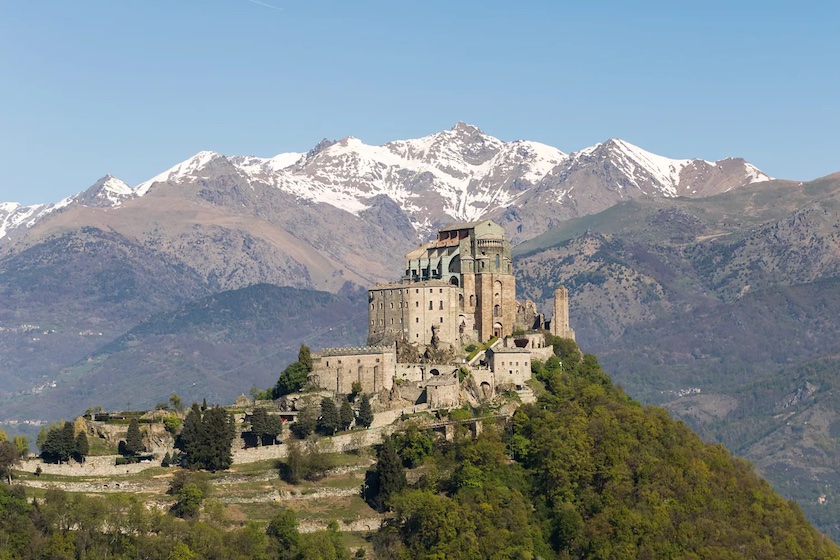
This day will be incredible. Physically exhausting, but incredible.
Upon your arrival in Turin, check the weather report, and select the most sunny and beautiful day to hike to the Sacra. The clearer skies, the better for this adventure. You’ll want to soak in the panoramic views.
It is a quick train ride from Turin to Sant’Ambrogio di Turino, and even from the train, you will be able to see the monastery waaaaay up on a on a mountain.
This day trip features so much, we had to write a separate post to cover it all: Hiking to the Magnificent Sacra di San Michele
Day 4 – Back in Turin – Not Quite Enough Time
The morning should be spent at an unmissable attraction: The National Museum of Cinema, located inside the symbol of Turin, the iconic Mole Antonelliana Tower. At 550 feet, it is believed to be the tallest museum in the world, and surely one of the most visually spectacular.
The museum is a fascinating and bizarre collection of nearly two-million artifacts, telling the story of the history of motion pictures, both in Italy and throughout the world.
Be sure to purchase a ticket for the panoramic lift, which takes visitors from the ground floor to the very top, where there is a terrace with beautiful views.
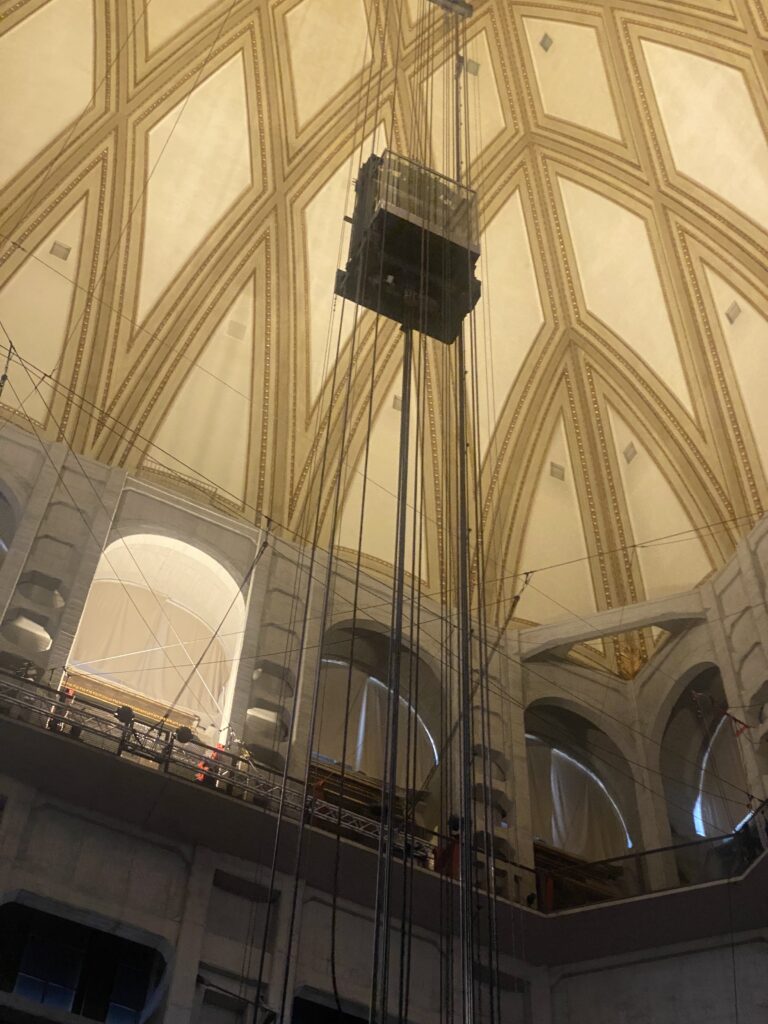
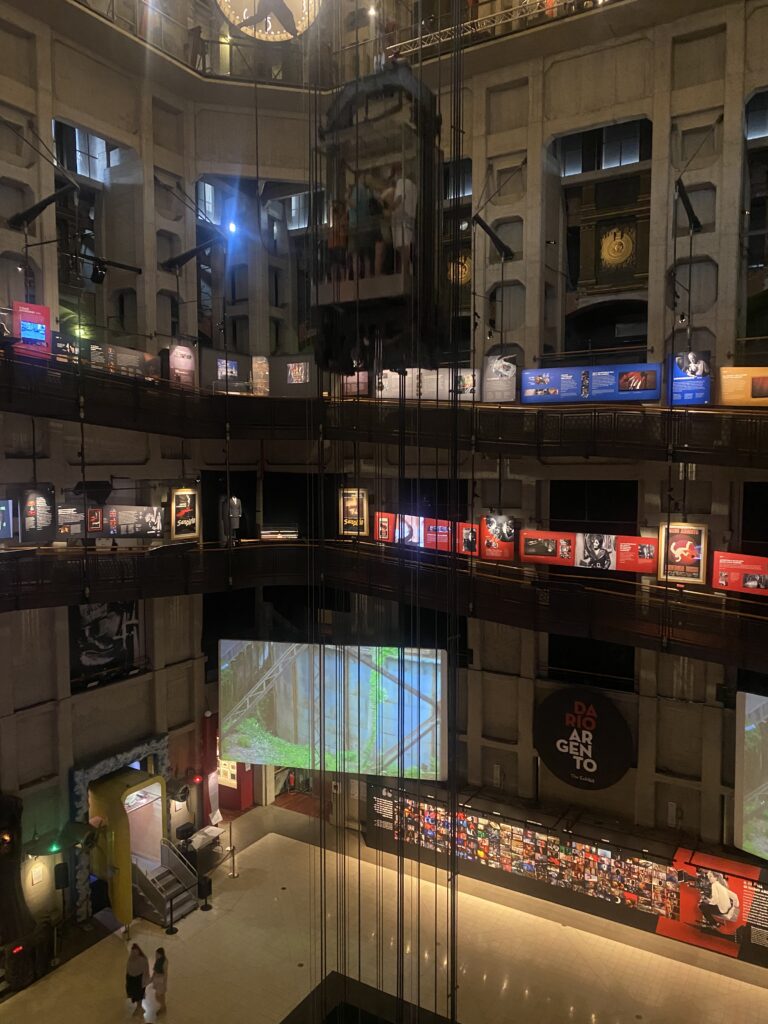
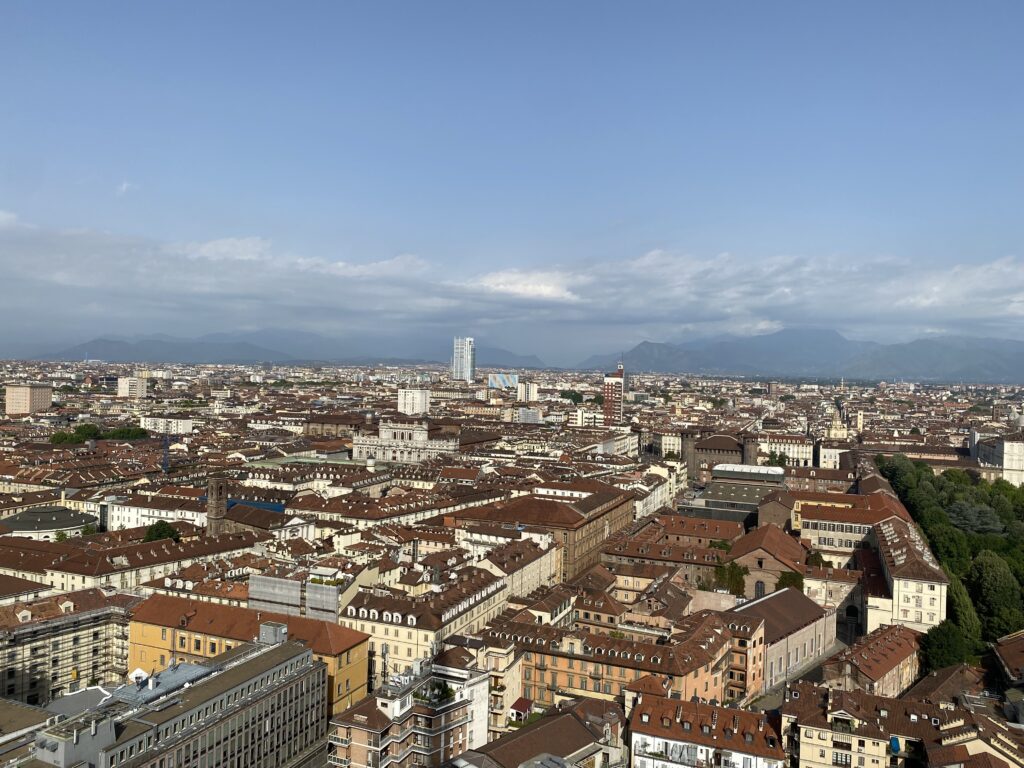
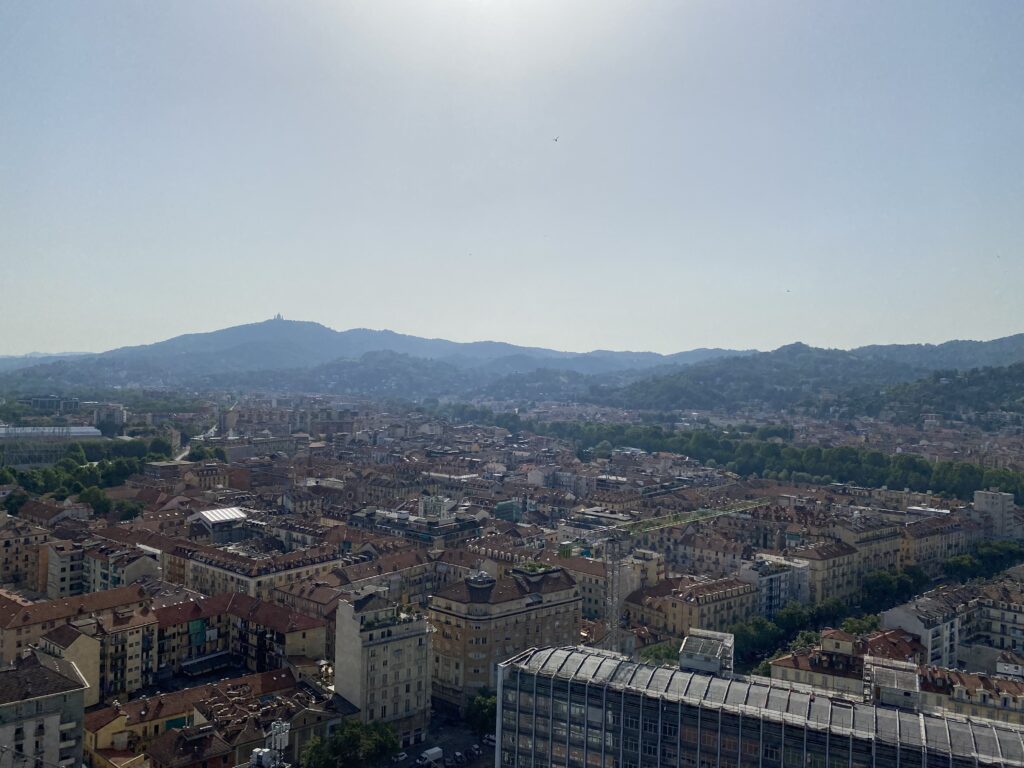
After the lift ride, visitors are returned to the ground floor and follow a winding path up the five stories, through the history of film and various genres (including a large exhibit about horror, yikes!). There is something unexpected at every turn.
The visit will take at least two hours for the casual movie fan, but could take a full day for an avid fan.
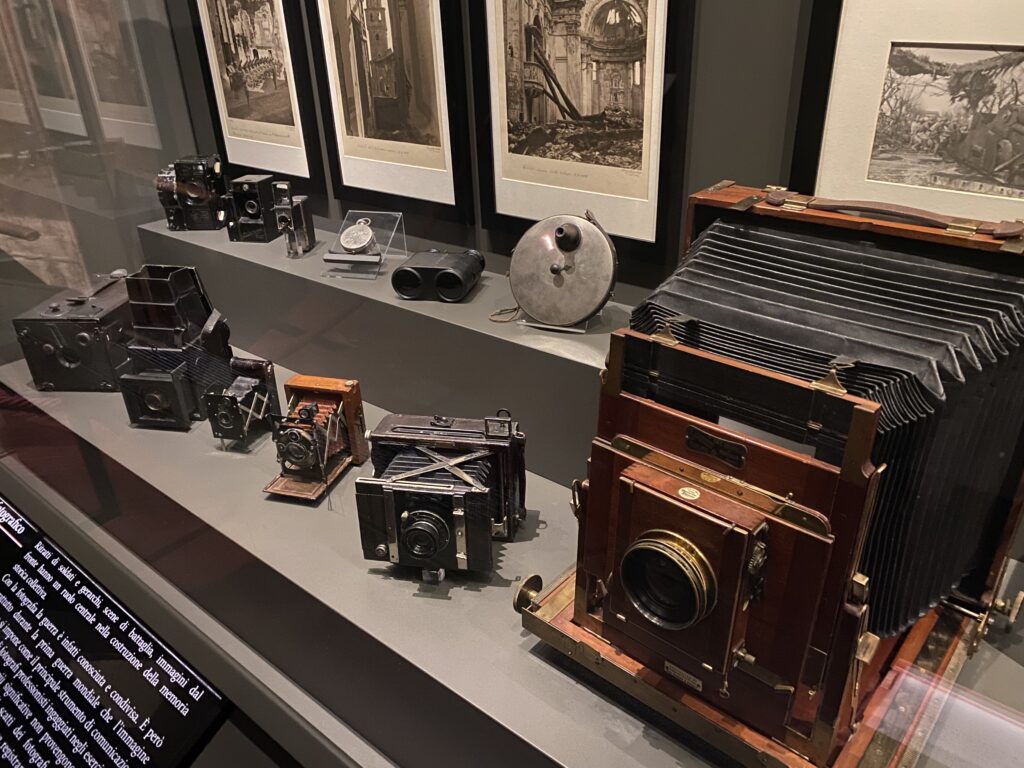
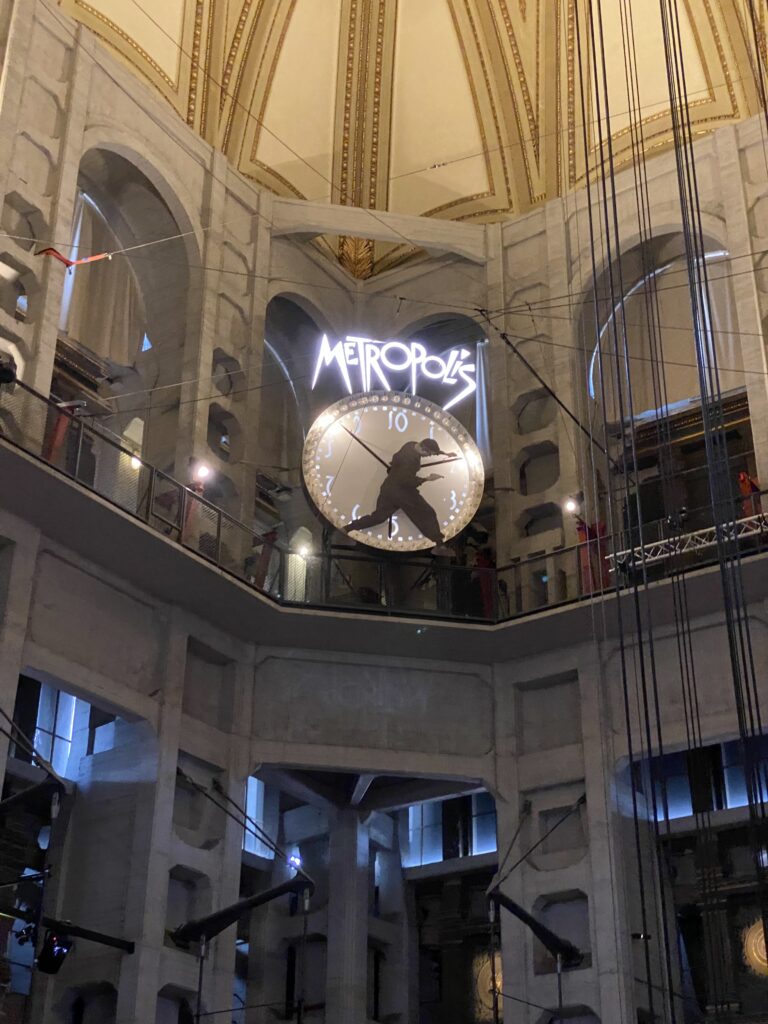
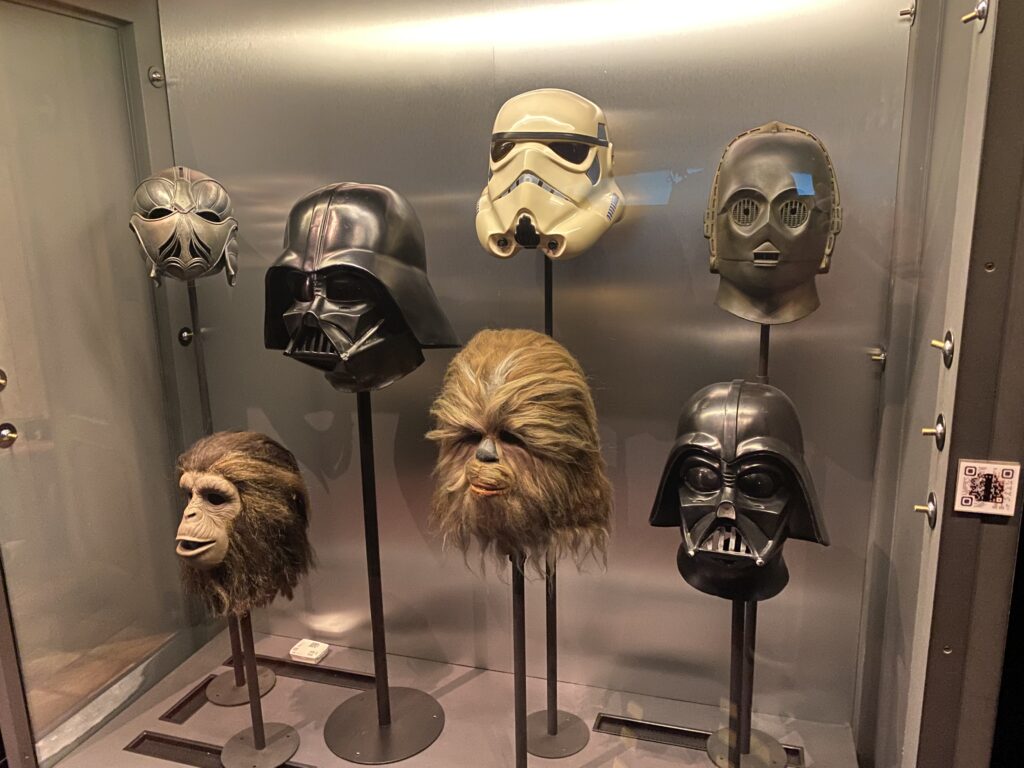
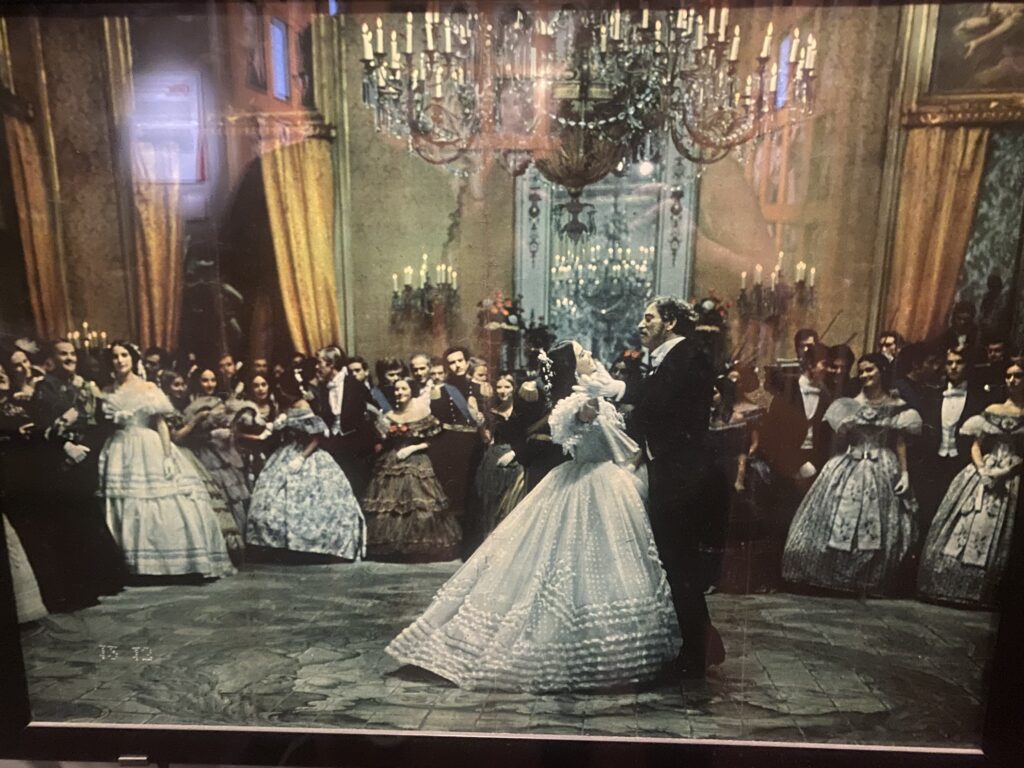
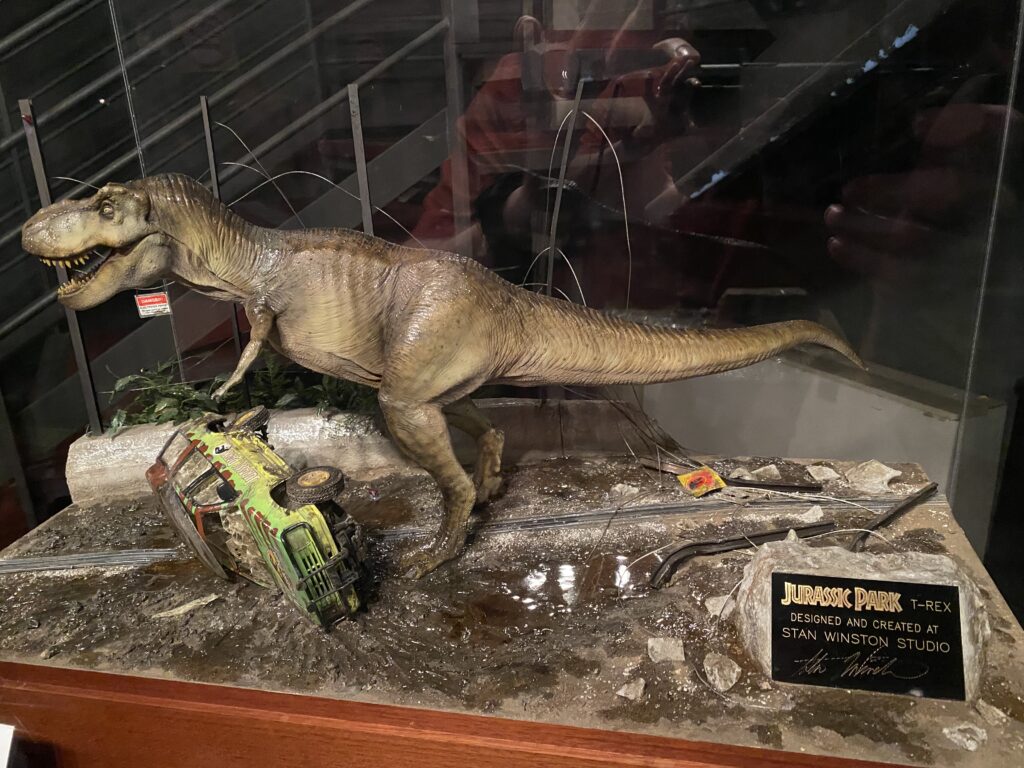
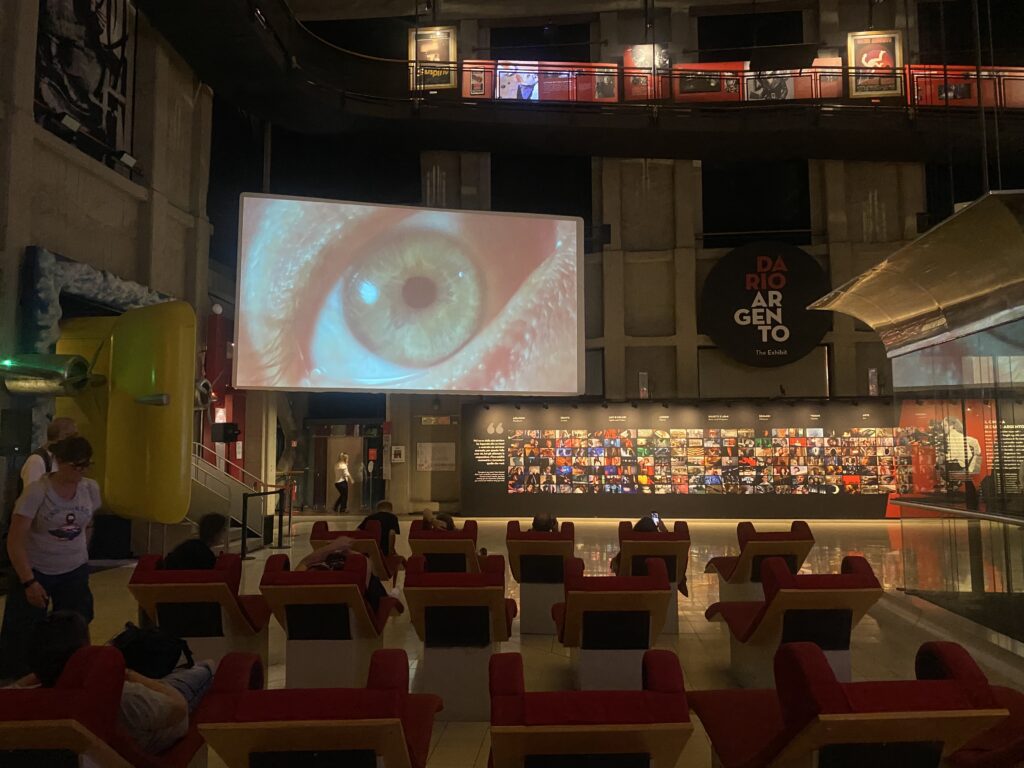
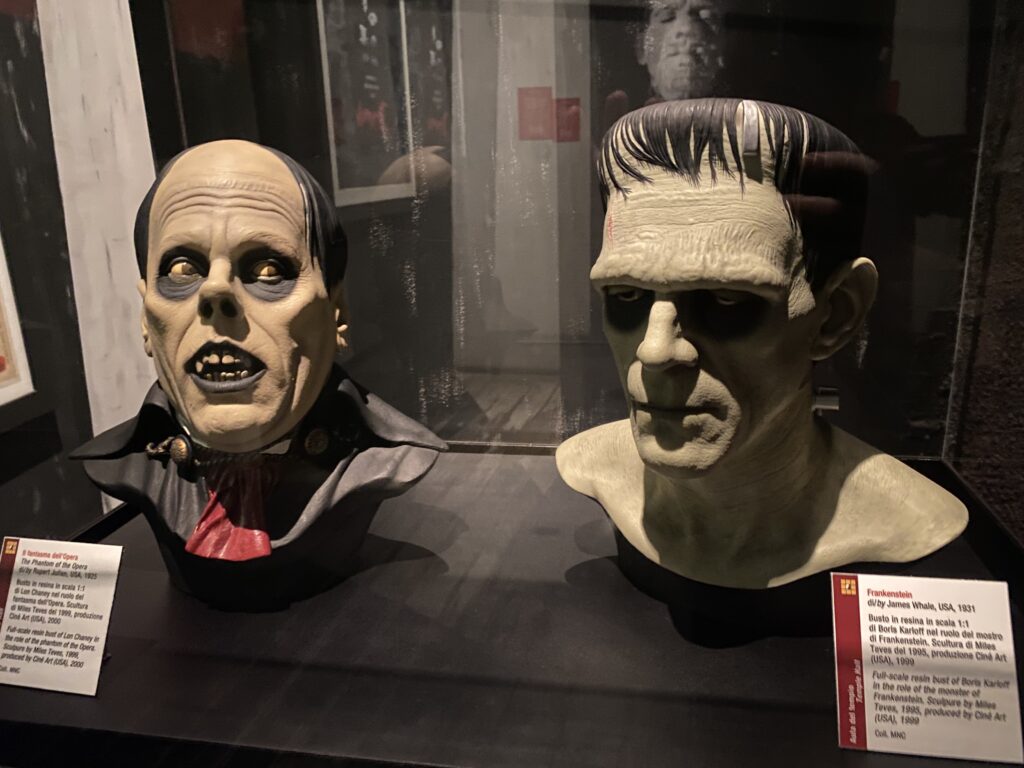
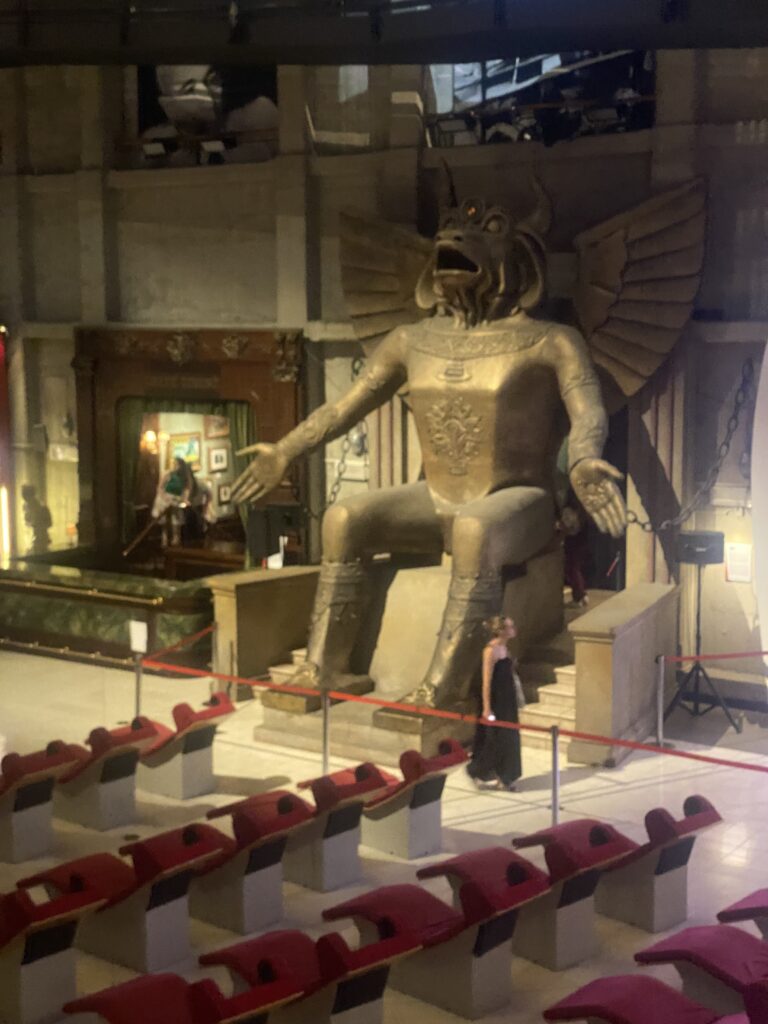
Sadly, one can only fit in so many activities in a day. In the afternoon, we have four suggestions, depending on your interests. There will only be time for one. If you want to do them all, you’ll have to stay another day or two. (Yay!)
Auto Museum – The Museo Nazionale dell’Automobile di Torino, known as MAUTO, is a must-see for car enthusiasts, and is interesting for the rest of us. Founded in 1933 and greatly expanded in 1960, MAUTO displays over 200 original cars from 80 different brands. It traces the history of the automobile (mostly Italian models) through interactive exhibits, examining how the automobile has impacted trends, culture, science, and technology throughout the world.
Food Tour or Cooking Class – We believe a great way to get to know a city and its history is to participate in a high-quality, small-group, food tour or cooking class. I Eat Food Tours is just that. Run by Chef Abram and his wife Cecilia, these entertaining and intimate tours and classes are food-focused, of course, but also really allow you to experience the culture and traditions of Turin. (Some take place in the morning, so you could go to the cinema museum in the afternoon instead.)
**As an aside, on a warm summer day, Chef Abram introduced us to shakeratos. What is that, you may ask? It is hot espresso put in a shaker with ice and a little sugar, then shaken vigorously. It gets foamy at the top and is SO good! We have not seen them outside of Italy. So if you are lucky enough to be in Italy, we highly recommend trying one.
Chocolate – It may be surprising to learn that Turin’s history of chocolate excellence dates back to the Savoy family in the 16th century. National Geographic even referred to it as the Chocolate Capital of Europe! There are a dizzying array of incredible chocolate shops in Turin. As another food option for those with a sweet tooth, I Eat Food Tours also offers an afternoon Chocolate and Sweets tour.
Allianz Stadium – For soccer fans particularly, this stadium will be a treat! More often known as the Juventus Stadium (its official name before the corporate sponsorship), it is home to the highly successful Juventus Football Team (soccer in US lingo). The team has the largest fanbase in Italy, and one of the largest in the world. The modern stadium, seating 41,000 people, is open 7 days a week and features a museum, extensive shopping opportunities, restaurants, and, on non-game days, stadium tours. The stadium is just north of Turin, and though getting there by bus is possible, it takes nearly an hour. The easiest and quickest way is to get a ten-minute taxi ride.
In the early evening, if you have not done so already, it is time to indulge in the Italian tradition of an aperitivo. This “happy-hour” type event is served in coffee shops, bars, and cafès throughout Turin and all of Italy. It is a traditional and celebrated time for people from all walks of life to slow down in the evening, meet friends and family, and have a spritz or vermouth or sparking wine, for instance. Those hospitable Italians always serve the drink with some free nibbles such as chips, nuts, olives, or other little snacks.
The aperitivo is intended to prepare your stomach for dinner. No planning or reservation is needed to partake, just stop at the spot near your accommodation that looks most appealing to you.
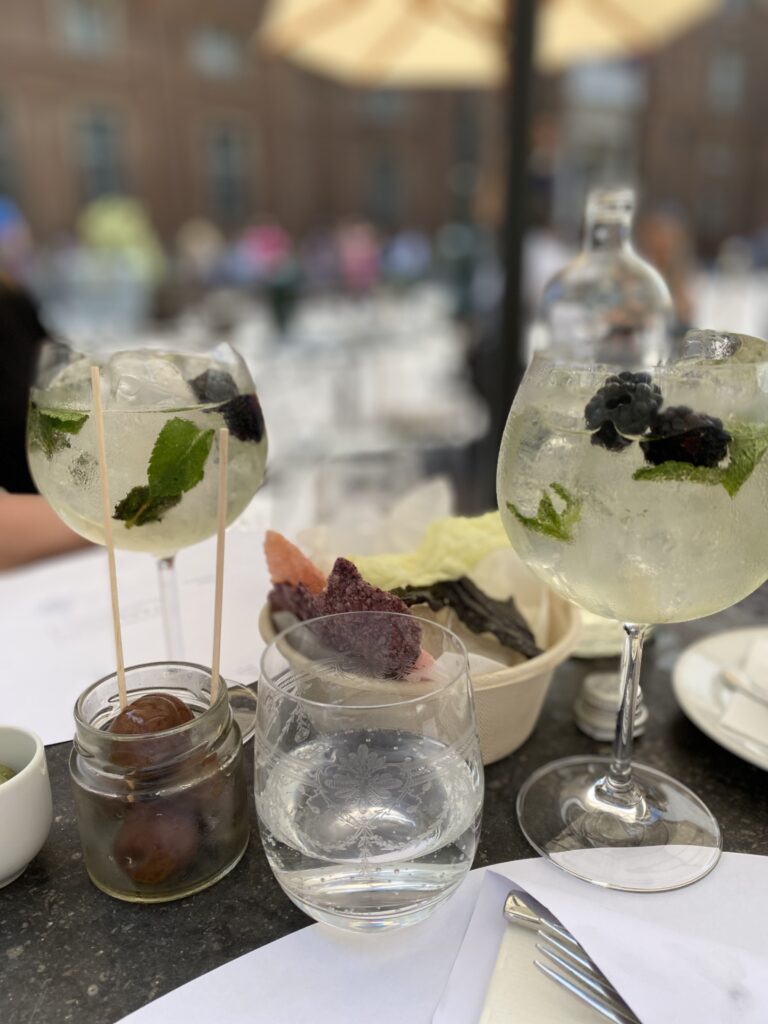
For this final dinner, choose between one of the wide array of cafès and restaurants in the Porta Nuova area. (Unless you took a food tour this afternoon, in which case you’re probably not hungry.)
If you’re yearning for a big splurge to celebrate your trip, consider the historic and Michelin-starred Del Cambio. It originally opened in 1757, and has served the likes of Casanova, Mozart, and Aubrey Hepburn, to name a few. Dinner here is an event. It features a renowned tasting menu, in addition to a la carte choices. Diners can select their wine from an expansive cellar even older than the restaurant. Dinner here does come at a hefty price.
If you don’t feel like breaking the bank for dinner, but want to experience the history and atmosphere, try the attached Bar Cavour. Elegant and refined, yet more casual, it offers a variety of choices ranging from burgers to creative fish, duck, and steak entrées.
Where to Stay
For first-time visitors especially, we highly recommend staying in the Centro Storico (the historic center) is an excellent option. This charming, walkable area is filled with elegant architecture and grand squares, and puts you close to many of the city’s most popular attractions and shopping areas. It is also close to the main train station, Torino Porta Nuova, for day-trips to other areas.
Discover more from Werthwhile Wandering
Subscribe to get the latest posts sent to your email.

